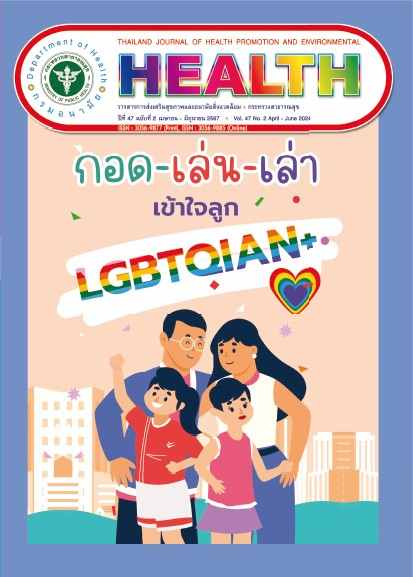Policies implementation to reduce sweet consumption and prevent oral and chronic non-communicable diseases in working-age population
Keywords:
beverage containing sugar, sugar-sweeten beverages, socioeconomic factor, working-age groupAbstract
The objective of this study was to analyze the socioeconomic factors which influence the consumption of sugar-sweeten beverage (SSB) among early working-age population. The results were used as information to formulate the policies to reduce sweet consumption among target groups. The researchers calculated a representative sample size from the early working-age population aged 15-29 years. Stratified two-stage sampling was used to include samples from the 4 provinces where the twelve health centers located in four regions. The required samples size was 560. Data were collected during February-March 2023 by interviewing and recording the results in electronic form. The data were analyzed using descriptive statistic. Chi-square at the statistically significant level with p-value <0.05 and logistic regression statistic was used to examine the socioeconomic factors related to SSB consumption. The results showed that 99.3% of early working-age drink SSB at least one time per week. The most popular SSB was brewed SSB such as coffee, Thai tea, or green tea (77.5%). The amount of sugar received from SSB per day was 120.1 grams. Factors associated with SSB consumption including gender (male), family member drinks SSB and having a shop selling brewed SSB in educational institutions or workplaces. Policies have been recommended to 1) limit the sale of brewed SSB in educational institutions and workplaces 2) make an agreement with a SSB shop to reduce the amount of sugar in SSB to no more than 2 teaspoons and add a less sweet alternative menu 3) communicate and campaign ‘no stocking SSB at home’ to reduce their own access to SSB which may affect the behavior and health status of family members.
Downloads
Published
Issue
Section
License
Copyright (c) 2024 Thailand journal of Health Promotion and Environmental Health

This work is licensed under a Creative Commons Attribution-NonCommercial-NoDerivatives 4.0 International License.

